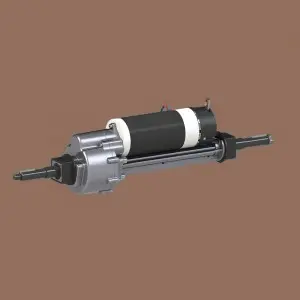The transaxle is a critical component in your vehicle’s drivetrain, and if a leak occurs, it could indicate a serious problem that needs to be addressed immediately. If your Ranger’s transaxle is leaking, it’s important to understand the potential causes and effects of the problem.
First, let’s take a closer look at what a transaxle is and its role in a vehicle. The transaxle is a major mechanical component that combines the functions of the transmission, axle, and differential into one integrated assembly. It transfers power from the engine to the wheels and allows the wheels to rotate at different speeds, which is essential for the vehicle’s cornering and handling. For the Ford Ranger, the transaxle is a critical part of the vehicle’s overall performance and functionality.
When a transaxle leaks, it can be a sign of a variety of problems that can affect your vehicle’s performance and safety. One of the common causes of transaxle leaks is worn or damaged seals. The transaxle contains several seals to prevent fluid leakage, which can cause a fluid leak if these seals are worn or damaged. Additionally, a leaking transaxle may also indicate a cracked or damaged housing, which may occur due to impact or wear over time.
The type of fluid leaking from the transaxle can also provide important clues as to the nature of the problem. Transaxles typically use transmission fluid, or gear oil, to lubricate internal components and promote smooth operation. If the fluid leaking from the transaxle is red and has a sweet smell, it is most likely transmission fluid. On the other hand, if the fluid is thick and has a distinct gear oil smell, it may be gear oil. Identifying the type of fluid can help diagnose specific transaxle problems.
For a Ford Ranger, a leaking transaxle can have a variety of effects on the vehicle. First, it causes a loss of lubrication, which results in increased friction and wear on the transaxle’s internal components. Over time, this in turn can lead to reduced efficiency and potential damage to the transaxle. Additionally, a leaking transaxle can cause fluid loss, which affects the vehicle’s overall performance and can lead to overheating and mechanical failure.
If your Ford Ranger transaxle is leaking, it’s crucial to resolve the problem promptly to prevent further damage and ensure the continued reliability of your vehicle. The first step is to determine the source and extent of the leak. This may require a visual inspection of the transaxle and surrounding area to pinpoint the location of the leak. In some cases, it may be necessary to clean the transaxle and then run the vehicle to observe the source of the leak.
Once the source of the leak is identified, the next step is to determine the appropriate course of action to correct the problem. If a seal leaks, it can be replaced to prevent further leakage. However, if the transaxle housing is cracked or damaged, more extensive repairs or even transaxle replacement may be required. It is important to consult a qualified mechanic or technician to assess the extent of the damage and determine the best course of action.
Ignoring a transaxle leak in your Ford Ranger can have serious consequences, including potential damage to the vehicle’s drivetrain and transmission components. It can also cause safety hazards if leaking fluid makes roads slippery. Therefore, transaxle leakage issues must be addressed promptly and effectively to ensure continued vehicle performance and safety.
In summary, a transaxle leak in your Ford Ranger is a serious problem that requires attention and immediate action. Understanding the potential causes and effects of a transaxle leak is critical to effectively resolving the problem. By identifying the source of the leak and taking the necessary steps to correct the problem, owners can ensure the continued reliability and safety of their Ford Ranger. Regular maintenance and inspections can also help prevent transaxle leaks and other potential problems, ultimately extending the life of your vehicle’s driveline.
Post time: Jul-12-2024


